
Mars, the fourth planet from the Sun, has appeared as a setting in works of fiction since at least the mid-1600s. Trends in the planet's portrayal have largely been influenced by advances in planetary science. It became the most popular celestial object in fiction in the late 1800s, when it became clear that there was no life on the Moon. The predominant genre depicting Mars at the time was utopian fiction. Around the same time, the mistaken belief that there are canals on Mars emerged and made its way into fiction, popularized by Percival Lowell's speculations of an ancient civilization having constructed them. The War of the Worlds, H. G. Wells's novel about an alien invasion of Earth by sinister Martians, was published in 1897 and went on to have a major influence on the science fiction genre.

Gregory Benford is an American science fiction author and astrophysicist who is professor emeritus at the department of physics and astronomy at the University of California, Irvine. He is a contributing editor of Reason magazine.

The Time Ships is a 1995 hard science fiction novel by Stephen Baxter. A canonical sequel to the 1895 novella The Time Machine by H. G. Wells, it was officially authorized by the Wells estate to mark the centenary of the original's publication. The Time Ships won critical acclaim. It won the John W. Campbell Memorial Award and the Philip K. Dick Award in 1996, as well as the British Science Fiction Association Award in 1995. It was also nominated for the Hugo, Clarke and Locus Awards in 1996.
Daniel Keys Moran, also known by his initials DKM, is an American computer programmer and science fiction writer.
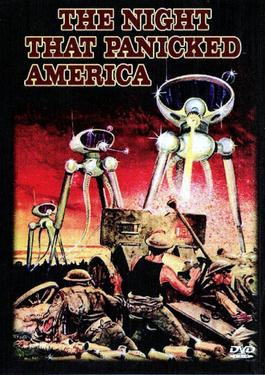
The Night That Panicked America is an American made-for-television drama film that was originally broadcast on the ABC network on October 31, 1975. The telefilm dramatizes events surrounding Orson Welles' famous - and infamous - War of the Worlds radio broadcast of October 30, 1938, which had led some Americans to believe that an invasion by Martians was occurring in the area near Grover's Mill in West Windsor, New Jersey.

Man Plus is a 1976 science fiction novel by American writer Frederik Pohl. It won the Nebula Award for Best Novel in 1976, was nominated for the Hugo and Campbell Awards, and placed third in the annual Locus Poll in 1977. The story is about a cyborg, Roger Torraway, who is designed to operate in the harsh Martian environment so that humans can colonize Mars.
Martin Harry Greenberg was an American academic and anthologist in many genres, including mysteries and horror, but especially in speculative fiction. In all, he compiled 1,298 anthologies and commissioned over 8,200 original short stories. He founded Tekno Books, a packager of more than 2000 published books. He was also a co-founder of the Sci-Fi Channel. Greenberg was also an expert in terrorism and the Middle East. He was a longtime friend, colleague and business partner of Isaac Asimov.

The Martians, also known as the Invaders, are the race of extraterrestrials and the main antagonists from the H.G. Wells 1898 novel The War of the Worlds. They are the main antagonists of the novel, and their efforts to exterminate the populace of the Earth and claim the planet for themselves drive the plot and present challenges for the novel's human characters. They are notable for their use of extraterrestrial weaponry far in advance of that of mankind at the time of the invasion.
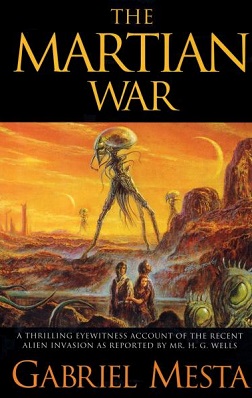
The Martian War: A Thrilling Eyewitness Account of the Recent Invasion As Reported by Mr. H.G. Wells is a 2005 science fiction novel by American writer Kevin J. Anderson, published under his pseudonym Gabriel Mesta. It is a retelling of H.G. Wells' 1898 novel The War of the Worlds similar to Anderson's past work War of the Worlds: Global Dispatches. It recounts the Martian invasion from a variety of viewpoints, and has ties to Wells' other work.
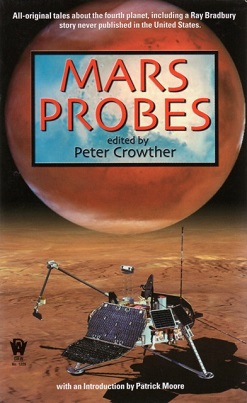
Mars Probes (2002) is a science fiction anthology of mostly all-new short stories edited by Peter Crowther, the third in his themed science fiction anthology series for DAW Books. The one story that is the exception to appearing here for the first time is a reprint of a Ray Bradbury story from 1968. The stories are all intended to be inspired by the theme of robotic probes on Mars. The book was published in 2002.
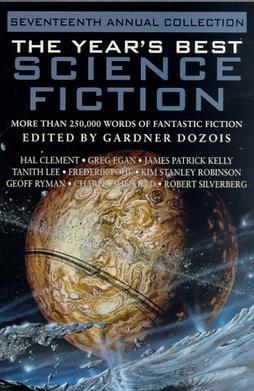
The Year's Best Science Fiction: Seventeenth Annual Collection is a science fiction anthology which was compiled by Gardner Dozois and published in 2000. It won the Locus Award for best anthology in 1991.
"Mars: The Home Front" is a short story by American writer George Alec Effinger, published in the 1996 anthology War of the Worlds: Global Dispatches. It is a crossover between H. G. Wells' 1898 novel The War of the Worlds and Edgar Rice Burroughs' Barsoom series.

Maciej Parowski was a Polish journalist, essayist, science fiction writer, editor and translator.

The War of the Worlds is a science fiction novel by English author H. G. Wells. It was written between 1895 and 1897, and serialised in Pearson's Magazine in the UK and Cosmopolitan magazine in the US in 1897. The full novel was first published in hardcover in 1898 by William Heinemann. The War of the Worlds is one of the earliest stories to detail a conflict between humankind and an extraterrestrial race. The novel is the first-person narrative of an unnamed protagonist in Surrey and his younger brother in London as southern England is invaded by Martians. It is one of the most commented-on works in the science fiction canon.
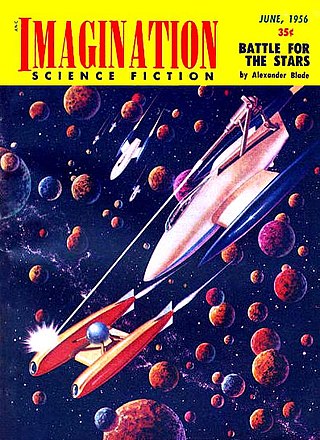
Space opera is a subgenre of science fiction that emphasizes space warfare, with use of melodramatic, risk-taking space adventures, relationships, and chivalric romance. Set mainly or entirely in outer space, it features technological and social advancements in faster-than-light travel, futuristic weapons, and sophisticated technology, on a backdrop of galactic empires and interstellar wars with fictional aliens, often in fictional galaxies. The term does not refer to opera music, but instead originally referred to the melodrama, scope, and formulaicness of operas, much as used in "horse opera", a 1930s phrase for a clichéd and formulaic Western film, and "soap opera", a melodramatic television series. Space operas emerged in the 1930s and continue to be produced in literature, film, comics, television, video games and board games.
The following is a list of works by science fiction author Kevin J. Anderson.
"The Soul Selects Her Own Society: Invasion and Repulsion: A Chronological Reinterpretation of Two of Emily Dickinson's Poems: A Wellsian Perspective" is a 1996 science fiction short story by Connie Willis. It was first published in Asimov's Science Fiction in April 1996, but written for the anthology War of the Worlds: Global Dispatches, in which it was published in June 1996; it was subsequently republished in War of the Worlds: Fresh Perspectives on the H. G. Wells Classic (2005), in This is My Funniest: Leading Science Fiction Writers Present Their Funniest Stories Ever (2006), in The Winds of Marble Arch and Other Stories (2007), and in The Best of Connie Willis: Award-Winning Stories (2013).

Nebula Awards 28 is an anthology of award winning science fiction short works edited by James Morrow, the third of three successive volumes under his editorship. It was first published in hardcover and trade paperback by Harcourt Brace in April 1994. The book has also been translated into Polish.

The Massacre of Mankind (2017) is a science fiction novel by the British writer Stephen Baxter, a sequel to H. G. Wells' 1898 classic The War of the Worlds, authorised by the Wells estate. It is set in 1920, 13 years after the events of the original novel, as a second Martian invasion is chronicled by Miss Elphinstone, the ex-sister-in-law of the narrator of War of the Worlds. Baxter also wrote an authorised sequel to Wells' novel The Time Machine, called The Time Ships.














